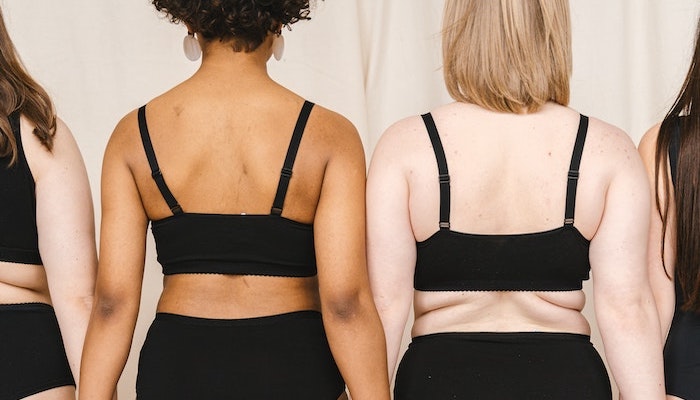
When we think of models, we think of the likes of Naomi Campbell, Kate Moss, and Gisele. Rarely do we think of mold-breakers, like Tess Holliday, Ashley Graham, and Hunter McGrady. Why? Because ever since the inception of the first fashion show in the 1860s, designers and merchants have hired straight-sized models to model their clothing. Indeed, one of the most controversial parts of the fashion industry is the models themselves.
There’s no one person to blame for the svelte ladies that grace the runway, but this “skinny model” culture all started with the “fit” model. A fit model is a model designers use for fitting their latest creations. Designers want their clothes to be the star of the runway, so designers use thinner women because their bodies are more like store mannequins than average women’s bodies are. And because a mannequin can’t strut down a catwalk, the inception of the fit model began. While it’s tempting to blame the patriarchy for this societal ill, 73% of fashion designers are women. However, can we truly blame women for this problem? Aren’t we all simply (fashion) victims of a toxic industry?
Many models live with eating disorders, and it’s not just thin models who suffer from these illnesses. Tess Holliday was diagnosed with anorexia, and she’s a plus sized model. If the most beautiful women in the world don’t think that their bodies are “good enough” or “thin enough,” then what chance does an average-sized woman have? The average American woman now wears a size 16-18. What about the “in-between” bodies? How do they fit into today’s modeling industry?
Women who fall into the size 6-14 range don’t fit the “standard” that the modeling industry sets forth. They aren’t quite thin enough to do runway modeling but aren’t quite curvy enough to do plus-size modeling. Fashion often with inclusivity, and the absence of “in-between” bodies on the runway is proof.
I’m petite and plus-sized, so shopping used to be a nightmare for me until I found plus-sized retailers like Torrid and Ashley Stewart. However, finding clothes that fit properly is still very much the reality for most American women. Both retailers and the modeling industry ignore people on the “sizing cusp.” The inconsistent sizing between brands doesn’t help, either. A women’s size 12 can be 10 different sizes at 10 different stores.
There are 167 million women in the United States, and women spend and average of $1800 to $4800 per year on clothing. This means that American women hand over a minimum of$300 billion dollars to the fashion industry every year.
It’s no secret that money talks and that women are powerful consumers in the fashion industry. If a large subset of those women aren’t being catered to, that’s a bad business move. Cutting out and refusing to represent a portion of an industry’s customer base makes no sense.IThe modeling industry needs to stop ignoring in-between” women, but as women, we control the cash flow in the industry. We can choose to boycott stores that don’t cater to all body types. We can ignore designers who prefer human “mannequins” to regular people on the runway. We have the power to change the narrative to include all bodies. What are we waiting for? Let’s create change now.
Photo by ANTHONY SHKRABA on Unsplash
That way, if and when you do choose to leave the single life behind you will have plenty of independent living under your belt.
Thank you so much for shedding light on the lack of diversity and representation of in-between bodies in fashion. You make an incredibly valid point – a huge subset of the female population does not see themselves represented on runways or in advertisements. The modeling and apparel industries are doing themselves a disservice both financially and ethically by ignoring these women.
By giving our dollars to businesses that practice real diversity in sizing and modeling, we shift the status quo. Your call to action is so motivating – if we band together as consumers and demand representation of our bodies, companies will have no choice but to respond. Thank you for empowering all women to advocate for themselves and each other!